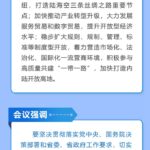The revitalized Fankou Riverside in Ezhou has restored the beautiful scenery of “hundred-mile Fanchuan with jade-like winding rivers.”
At dawn, in the Gezhouba section of the Yangtze River, finless porpoises leap out of the water to play, tracing silver-gray arcs in the air.
In the afternoon, at the China Carbon Emission Registration and Clearing Center building beside Wuhan’s Shahu Lake, carbon emission rights for over 3,700 enterprises nationwide are efficiently calculated and transferred here.
As night falls, office worker Xiao Wang uses carbon credits accumulated through the “Wuhan Carbon World” mini-program to easily exchange for a shared bike riding card.
These daily scenes collectively sketch a vivid picture of Hubei’s practice of green development.
During the “14th Five-Year Plan” period, Hubei has answered the essential question of “ecological priority and green development” through the dialectical unity of protection and development. The “green content” and “gold content” of Hubei’s development have both improved, with a more dynamically green and ecologically resilient Hubei rising prominently.
Prioritizing Yangtze River Ecological Restoration Above All Else
Water Quality in Hubei Section of Yangtze River Mainstream
Consistently Maintained at Grade II
The Yangtze River, stretching thousands of miles, is the mother river of the Chinese nation and a crucial support for its development. The protection and development of the Yangtze River have long been a concern.
In April 2018, on the banks of the Yangtze River in Yichang, Hubei, guidelines were established for the development of the Yangtze River Economic Belt: prioritizing comprehensive protection over massive development.
“The restoration of the Yangtze River’s ecological environment must be given overriding priority.” Last November, during an inspection in Hubei, this “Yangtze River mandate” was reiterated.
Hubei is the only province through which the Yangtze River mainstream flows for over a thousand kilometers. It is also home to the core water source area of the South-to-North Water Diversion Project’s middle route and the Three Gorges Dam area, bearing the responsibility of ensuring “clear water flows eastward continuously and pure water moves north steadily.”
Following this direction, Hubei has firmly shouldered its political responsibility as a major ecological province, initiating profound changes in the Yangtze River’s ecology as the great river surges forward.
At 3:00 PM on September 9, 2018, by the Yangtze River, with a dull explosion, the chimney of Xingfa Group’s Xingrui First Thermal Power Plant collapsed. This demolition became a landmark moment in breaking the pattern of “chemical industry encircling the river” for Yangtze River protection.
With the determination to make tough decisions and govern the river with an iron fist, Hubei resolutely launched ten landmark campaigns for Yangtze River protection. Onshore, 118 chemical enterprises within one kilometer of the river were closed, relocated, or transformed, freeing 149.8 kilometers of shoreline and restoring 856 million square meters of riverside ecology. In the water, a comprehensive “health check” was conducted on the mother river, with 12,480 Yangtze River discharge outlets traced and remediated to protect river clarity.
Deep implementation of the “Double Ten Actions” and “Ten-Year Fishing Ban,” followed by ten quality and efficiency improvement actions. Strengthening coordinated ecological environment management across river basins, deepening joint prevention and treatment in 19 key basins… Through a series of precise and powerful “combination punches,” the diversity, stability, and sustainability of the Yangtze River ecosystem have been enhanced, yielding clear and impressive results:
The water quality in the Hubei section of the Yangtze River mainstream has remained stable at Grade II for six consecutive years, and the water quality of the Danjiangkou Reservoir has stayed above Grade II, ensuring “safe rivers and lakes, clear water flowing east, and pure water heading north.”
The clear waters have not only brought back the “smiling angel” Yangtze finless porpoise but also attracted the reappearance of critically endangered species like the knife fish, while rare birds such as the oriental stork thrive in Hubei.
Reshaping Development Approaches with Green Development Concepts
Energy Consumption Intensity Ranking 22nd Nationwide
Supports Economic Output Ranking 7th
Protection





